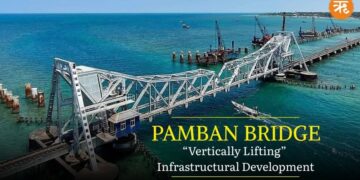Lieutenant Manoj Kumar Pandey: A Hero of the Kargil War*
Born on June 25, 1975, in Roodha village, in Uttar Pradesh, Lieutenant Manoj Kumar Pandey became a shining example of bravery and sacrifice in the Indian Army. During the Kargil War, Pandey played a pivotal role and was martyred on July 3, 1999, while fighting the enemy. He was posthumously awarded India’s highest gallantry medal, the Param Vir Chakra, for his extraordinary courage. Lieutenant is one of 21 soldiers honored with this prestigious award. One of the most challenging fronts in the Kargil War was Khalubar. Leading his Gorkha Rifles, Pandey bravely fought against the Pakistani army. Under his leadership, his comrades continuously attacked the post, ultimately capturing it. However, this victory came at the cost of Pandey’s life. Lieutenant Manoj Kumar Pandey’s heroism and sacrifice remain an enduring inspiration, epitomizing the highest values of duty and bravery.
Lieutenant Manoj Kumar Pandey was martyred on 3 July 1999
He led his Gorkha Rifles and fought bravely against the Pakistani army
– He was awarded highest bravery medal Param Vir Chakra for his extraordinary bravery in the Kargil war
*Mahatma Jyotiba Phule and Savitribai Phule: Pioneers of Social Reform and Education*
On July 3, 1851, Mahatma Jyotiba Phule and Savitribai Phule opened their second school for girls in Pune, Maharashtra, marking a significant step in their mission for education and social reform. Eight girls enrolled on the very first day. As India’s first female teacher and a notable social reformer, Savitribai Phule, along with her husband Jyotiba Phule, led the social reform movement in Maharashtra and India. Their pioneering efforts began with the establishment of the country’s first girls’ school in 1848, which saw nine students enroll. On March 15, 1852, they opened a third school for girls in Batal Peth. They also formed the Satya Shodhan Samaj, an organization that provided essential support during the famine of 1876-1879, feeding 2,000 children in their ashram. On January 28, 1853, they established the Bal Hatya Pratibandhak Grih to prevent infanticide. They also organized widow remarriage meetings to address women’s issues. After Jyotiba Phule’s death in 1890, Savitribai continued his work until her own passing on March 10, 1897, while caring for plague patients.
Mahatma Jyotiba Phule and Savitribai Phule’s dedication to education and social justice left an enduring legacy in India.
On July 3, 1851, both of them opened the second school for girls
– On January 28, 1853, they established a child murder prevention home
– Mahatma Jyotiba Phule died in the year 1890
– Savitribai died on March 10, 1897
*Bal Gangadhar Tilak: A Stalwart of Indian Nationalism*
On July 3, 1908, Bal Gangadhar Tilak was arrested by the British under Section 124-A of the Indian Penal Code, 1870, on charges of treason. His arrest was due to his revolutionary articles in his Marathi newspaper, Kesari, which infuriarated the British authorities. Consequently, Tilak was sentenced to six years in prison and imprisoned in Mandalay Jail, Burma, from 1908 to 1914. Tilak faced treason charges three times during his life. His first arrest occurred in 1897. Born on July 23, 1856, in Ratnagiri district, Maharashtra, Tilak was an Indian nationalist, teacher, journalist, and freedom fighter. His father, Gangadhar Tilak, was a school teacher and Sanskrit scholar who passed away when Tilak was sixteen. Tilak graduated from Pune’s Deccan College in 1877 and became a mathematics teacher in a private school in Pune. In 1890, he joined the Indian National Congress and emerged as a leading revolutionary of his time. Tilak’s unwavering dedication to India’s independence movement earned him the title of “Lokmanya,” meaning “accepted by the people.” Bal Gangadhar Tilak’s contributions to India’s struggle for independence remain monumental, inspiring future generations of freedom fighters.
On July 3, 1908, Bal Gangadhar Tilak was arrested by the British on charges of sedition
– Tilak was arrested under Section 124-A of the Indian Penal Code, 1870
– The British sentenced Tilak to 6 years in prison
*Hansa Mehta: A Champion of Women’s Rights and Education*
Born on July 3, 1897, in Surat, Gujarat, Hansa Mehta was a reformist, social worker, educationist, freedom fighter, feminist, and writer. She was one of the 15 women who were part of the Constituent Assembly that drafted the Indian Constitution, serving on both the Advisory Committee and the Sub-Committee on Fundamental Rights. Mehta was a strong advocate for women’s equality and justice in India. As the Indian representative to the United Nations Human Rights Commission in 1947-48, Mehta famously insisted on changing the phrase “all men are created equal” to “all humans are created equal” in the Universal Declaration of Human Rights, emphasizing that rights are for all people, not just men. Throughout her life, Mehta represented India in numerous international delegations focused on educational, social, and cultural issues. Her significant contributions were recognized with the Padma Bhushan award in 1959. Hansa Mehta passed away on April 4, 1995, leaving behind a legacy of advocacy for women’s rights and education.
Hansa Mehta was born on July 3, 1897 in Surat, Gujarat
– She was part of the constituent assembly that drafted the Indian Constitution
– She advocated equality and justice for women
*Vidyasagar Setu: A Marvel of Modern Engineering*
The construction of Vidyasagar Setu in Kolkata began on July 3, 1979. Named after the esteemed Bengali education reformer Pandit Ishwarchandra Vidyasagar, it is the longest cable-stayed bridge in India and one of the longest in Asia, spanning 823 meters. It is the second bridge built over the Hooghly River, following the iconic Howrah Bridge, also known as Rabindra Setu. The foundation stone was laid by then Prime Minister Indira Gandhi on May 20, 1972, and the bridge took over 22 years to complete, with a total cost of 3.88 billion Indian rupees. Designed by Schlaich Bergermann & Partners, it was examined by Freeman Fox & Partners and Industries Corporation of India Limited. The construction was carried out by Braithwaite Burn Jessop and Construction Company Limited (BBJ). Despite its capacity to handle 85,000 vehicles daily, the bridge is used by approximately 30,000 vehicles each day. Vidyasagar Setu remains under the control of the Hooghly River Bridge Commission, serving as a vital connection in Kolkata’s infrastructure.
The construction of Vidyasagar Bridge in Kolkata started on July 3, 1979
-It is the longest cable-stayed bridge in India
– The length of this Bridge is 823 meters
















Comments